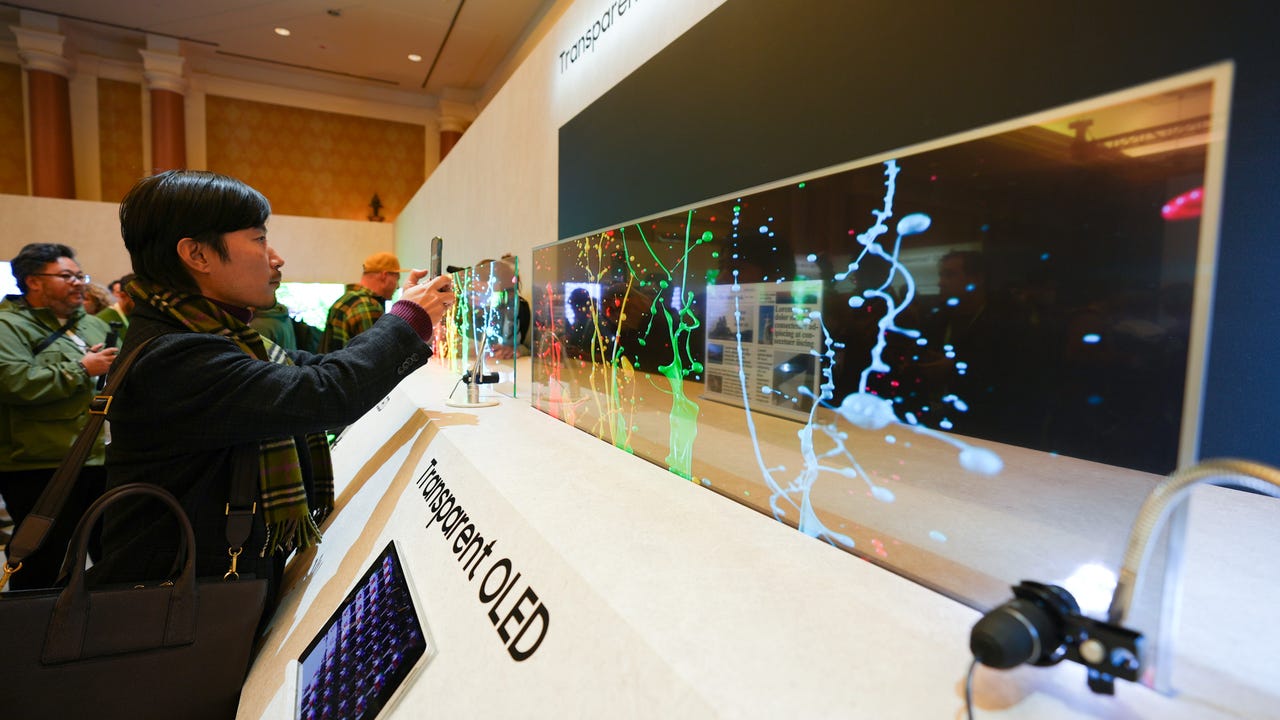
































The floating screen reality is here, and LG and Samsung just proved it. At CES, I spent a fine evening with both offerings, the OLED T (for Transparent) from LG and the Transparent MicroLED from Samsung. Both were equal parts mesmerizing, equal parts head-scratching.
Also: CES 2024: What's Next in Tech
First, LG's OLED T, a foray that's not unfamiliar for the Korean giant. The model I saw measured at 77 inches, a size that's larger than the concepts of past CES shows and one that LG says is just big enough without being excessive.
sorts through the wave of CES news and announcements to identify innovations that will make the most impact on professionals. Learn about the newest products and trends that transform the future of work and life.
Read nowThe TV, by default, displays images over a transparent OLED panel, with the company packaging with it a catalog of "Always Ready" video content tuned specifically for the clear backdrop. That includes a fish tank effect, leaves in the wind, and a partnership with music company, Dingo, for live performances. Clearly, LG sees the OLED T as more than just an entertainment hub for post-dinner viewing; instead, it's an ambiance machine with twice the purpose of a standard TV.
The 77-inch LG OLED T TV at CES.
With a press of a button, a shade of black rolled out from underneath the TV, giving the contrast levels I had come to expect from LG's OLED panels. I was also told that the image quality of the OLED T is closer to the C4 than the G4 model, and I agree; the colors on the demo unit were not as sharp and bright as my spoiled eyes were used to, not after LG had briefed me on its G4 model just minutes beforehand.
Also: LG's newest OLED TVs will use AI to look and sound better than ever
Finally, LG's OLED T is "wireless," just like its M series TVs, meaning there's still one cable that's plugged directly for power delivery, but the rest of the input/output is handled by a transmitter box nearby. This aspect, along with all the other flashy features above, point to a price tag that LG isn't revealing just yet, though the company has said that it plans to sell the TV in the near future.
Comparatively, Samsung's Transparent MicroLED demo was more so a vision of the future than an attainable, for-consumer product. That doesn't discredit the innovation factor of the technology by any means. During the company's First Look experience, Samsung presented its Transparent MicroLED displays in various form factors, demonstrating how the modularity aspect allows buyers to custom fit the displays to their liking.
It's hard to describe how hypnotic the technology is, and the images of the TV certainly don't any justice, but trust me when I say that content on it lookedcrisp. The high pixel density of Samsung's micro LED gets the credit here, and the decision to go LED versus OLED means the visuals are less impacted by environmental brightness.
Ultimately, you can't actually buy Samsung's Transparent Micro LED TV -- not yet, at least -- so I'm going to give LG the win. But to see both companies push the envelope of how we see and interact with what is arguably the centerpiece of every house is a treat. Stay tuned for more of that at CES 2024.
 Hot Tags :
Home & Office
Home Entertainment
TVs
Hot Tags :
Home & Office
Home Entertainment
TVs